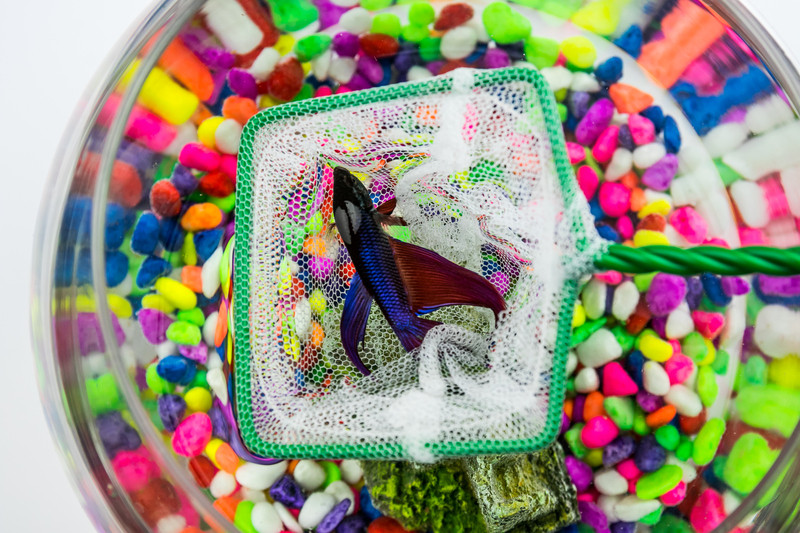Protect Your Sofa Investment with Pro Storage Advice
Your sofa is more than a piece of furniture--it's a centerpiece for comfort, relaxation, and connection. Whether you own a classic leather Chesterfield, a modern sectional, or a beloved heirloom, safeguarding your sofa with proper storage is crucial to extend its beauty and lifespan. Below, we dive deep into expert sofa storage tips, so you'll never have to worry about your sofa succumbing to preventable damage. Read on to explore comprehensive, SEO-optimized guidance on protecting your sofa investment with professional storage advice.

Why Proper Sofa Storage Matters
Every sofa owner understands it's a significant investment. Poor storage decisions can rapidly degrade that investment, causing:
- Stains, mold, and mildew from excess moisture
- Fabric fading or leather cracking from sunlight and temperature fluctuations
- Pest infestations, such as termites, moths, or rodents
- Physical damage, including tears, scratches, and sagging cushions
Taking a proactive step to store your sofa carefully will:
- Preserve its appearance and comfort
- Maintain resale value
- Prolong overall lifespan
- Avoid costly repairs or premature replacement
Whether you're temporarily downsizing, moving, or simply rearranging your space, ensure your sofa's safety with our expert strategies.
Pre-Storage Preparation: Clean, Protect, and Inspect
Clean Your Sofa Thoroughly
Before you store your sofa, it's crucial to clean every inch. Unattended crumbs, body oils, and stains can attract pests and cause odors. Here's how to do it right:
- Vacuum: Use an upholstery attachment to suction dirt, crumbs, and pet hair from every crevice, under cushions, and along seams.
- Spot Clean: Refer to manufacturer tag instructions (usually labeled as "W," "S," "SW," or "X") to determine suitable cleaning agents. Use mild, fabric-safe cleaners for water-cleanable (W) sofas, or dry-cleaning solvents for (S) tags.
- Leather Sofas: Wipe down with a damp microfiber cloth and apply a leather conditioner to keep the material supple and crack-free.
- Dry Thoroughly: Allow your sofa to air dry in a well-ventilated area before moving it into storage to prevent mold or mildew.
Disassemble with Care (If Possible)
If your sofa allows, disassemble it to simplify transport and minimize strain on structural joints. Remove legs, cushions, and detachable arms--always keeping hardware in clearly labeled bags.
- Protect delicate components by wrapping them in bubble wrap and soft blankets.
- Keep small parts together to avoid misplacing them during re-assembly.
Inspect for Existing Damage
Check for tears, loose joints, or cracking. Address small repairs before storage to prevent minor issues from worsening. Unnoticed problems may multiply during prolonged storage due to temperature or humidity fluctuations.
Choosing the Right Storage Space for Your Sofa
Not all storage locations are created equal. The type of storage you choose will significantly affect how well your sofa survives its dormancy period.
Climate-Controlled Storage Units
- Best choice for long-term storage, antique or luxury sofas, leather, and delicate upholstery.
- Maintains consistent temperature and humidity, which shields against mold, mildew, leather cracking, and wood warping.
Traditional Storage Units
- Suitable for short-term storage and non-delicate furniture.
- Ensure the facility is clean, pest-free, and weatherproof.
Home Garage or Basement
- Use caution: These areas often experience temperature swings and humidity fluctuations, making them risky for valuable sofas.
- If unavoidable, invest in a dehumidifier and moisture absorber packets to combat dampness.
Best Practices for Storing Your Sofa Like a Pro
Wrap and Protect with Appropriate Materials
- Avoid plastic wrap for long-term storage. While it might block dust, it traps moisture, causing mold and mildew. Opt for
- Breathable covers made from cotton or canvas to shield from dust, pests, and light.
- Wrap wooden parts with moving blankets or bubble wrap for added protection.
- Use furniture pads beneath to protect from floor dampness and add a buffer against scuffs.
Store Off the Ground
- Place pallets or blocks under your sofa--never store directly on a concrete floor, which can transfer moisture up into the fabric or frame.
- This simple process adds a layer of protection from flooding, spills, and mold.
Allow for Air Circulation
- Don't press your sofa flush against the wall or other boxes. Allow a few inches of space so air can circulate and moisture doesn't collect.
- Proper ventilation is key to avoiding a musty smell or damp buildup.
Store Cushions Separately
- Wrap each cushion individually and store them upright. This maintains their shape and prevents any flattening over months of inactivity.
- Nestling cushions in a breathable bag or pillowcase keeps them protected but aired out.
Avoid Placing Heavy Items on Top
- Never use the sofa as a storage platform for boxes, tools, or other heavy items!
- Excess weight leads to crushed padding, sagging springs, or structural distortions.
Professional Sofa Storage: When to Hire the Experts
Sometimes, DIY storage isn't enough--especially for high-value or sentimental pieces. Consider hiring a professional storage company that offers:
- Packing and wrapping services with industry-grade materials
- Climate-controlled long-term storage with security surveillance
- Special handling for antiques, leather, suede, or designer sofas
- Optional insurance for peace of mind against accidents
Professional storage solutions are especially wise during extended absences, international relocations, or for delicate, irreplaceable family heirlooms.
Common Mistakes to Avoid When Storing Sofas
Even the most well-meaning furniture owners can make costly errors. Here are frequent missteps and how to avoid them:
- Poor cleaning before storage: Skipping cleaning leads to permanent stains and attracts pests.
- Using plastic wrap: Impedes ventilation and causes humidity buildup.
- Ignoring climate conditions: Moist, cold, or blazing hot environments are deadly for wood and fabric integrity.
- Overstuffing storage: Blocks necessary airflow and results in crushed sofa arms or backs.
- Skipping insurance: Especially important for pricier furniture--rare is the storage unit that's completely immune to damage or disaster.
Long-Term vs. Short-Term Sofa Storage Tips
Short-Term (< 3 months):
- Basic cleaning and covering are usually enough.
- Choose a clean, dry space with minimal direct sunlight.
- Ventilate cushions periodically if possible.
Long-Term (3+ months):
- Prioritize climate-controlled storage.
- Inspect and refresh protective coverings every few months to ensure no new damage has occurred.
- Check for pests and humidity with occasional visits if feasible.
Insurance and Documentation: Protecting Your Sofa Investment
- Take photos of your sofa from all angles before storage (and when putting in or removing from storage).
- Keep receipts, warranty, or appraisal documents in a safe, digital format.
- Review your homeowner's/renter's insurance or storage facility insurance for coverage details.
- Consider extra insurance for high-value or antique pieces.

Expert Sofa Storage Advice: FAQ
How do I keep my sofa from getting musty in storage?
Use breathable sofa covers, keep the sofa raised above the ground, and place moisture absorbers nearby. If safe, visit your storage periodically to air out the sofa and check conditions.
Can I store my leather sofa without climate control?
It's not recommended. Leather is particularly sensitive to temperature and humidity swings. Climate-controlled conditions protect against drying, cracking, and mildew.
Should I vacuum seal my sofa?
No--vacuum sealing traps moisture and can irreparably damage upholstery and cushions. Stick to loose, breathable covers.
Conclusion: Safeguard Your Sofa Investment with Pro Storage Tips
Your sofa is a statement of your style, comfort, and priorities. Ensuring its longevity by following professional storage advice isn't just about looking after furniture--it's about cherishing every memory your sofa holds. With proper cleaning, careful disassembly, and smart storage choices, you'll protect your sofa investment for years to come. When in doubt, consult the experts--your future self will thank you.
Remember: The smallest effort now can prevent the biggest heartaches later. Store smart, and relax knowing your sofa is in the best possible hands--even when it's out of sight.



